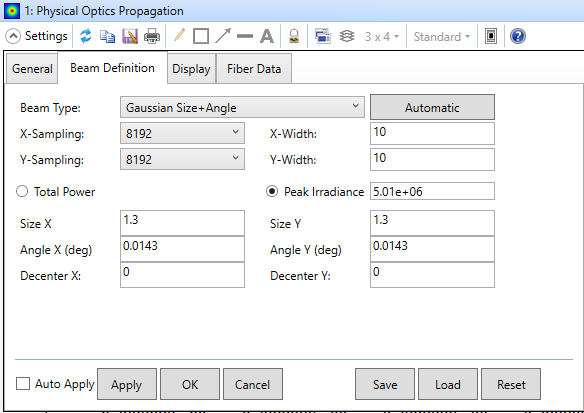Hi all,
I hope everyone is still doing well.
Following on from my last post (see “Related topics”) I have been trying to model an imperfect axicon tip for a 20 degree axicon from Thorlabs (AX2520-B). I have been using the standard surface within the lens data editor to do so.
From the instructions within the help function for the standard surface, I have calculated the conic term to be -8.54 and have estimated the radius of the tip curvature to be approximately 30 micron (as the help function states that this value is not too important as long as it is significantly smaller than the total aperture of the lens, which it is in this case).
Having placed surfaces at every 0.1 mm from the (now imperfect) conical tip across its approximately 7.5 mm Bessel zone length for the 2.6 mm 1/e^2 input beam diameter (giving a total of 82 surfaces in the attached files), I only observe miniscule oscillations in the peak irradiance on axis, contrary to my experimental observations (as well as that from various research papers). I was wondering why this may be and if anyone has any suggestions on how to correct this?
The POP settings are as follows (the high peak irradiance comes from the ultrashort pulsed nature of the input beam for the application I am modelling):

The plane output pilot radius is set to “Plane” at surface 4 (the conical surface), and surface 6 (placed 0.1 mm after the axicon tip) is resampled to a width of 2.5 x 2.5 mm (to maintain adequate resolution of the Bessel beam).
I have attached the .zmx and .ses files below.
Thank you again for your time,


